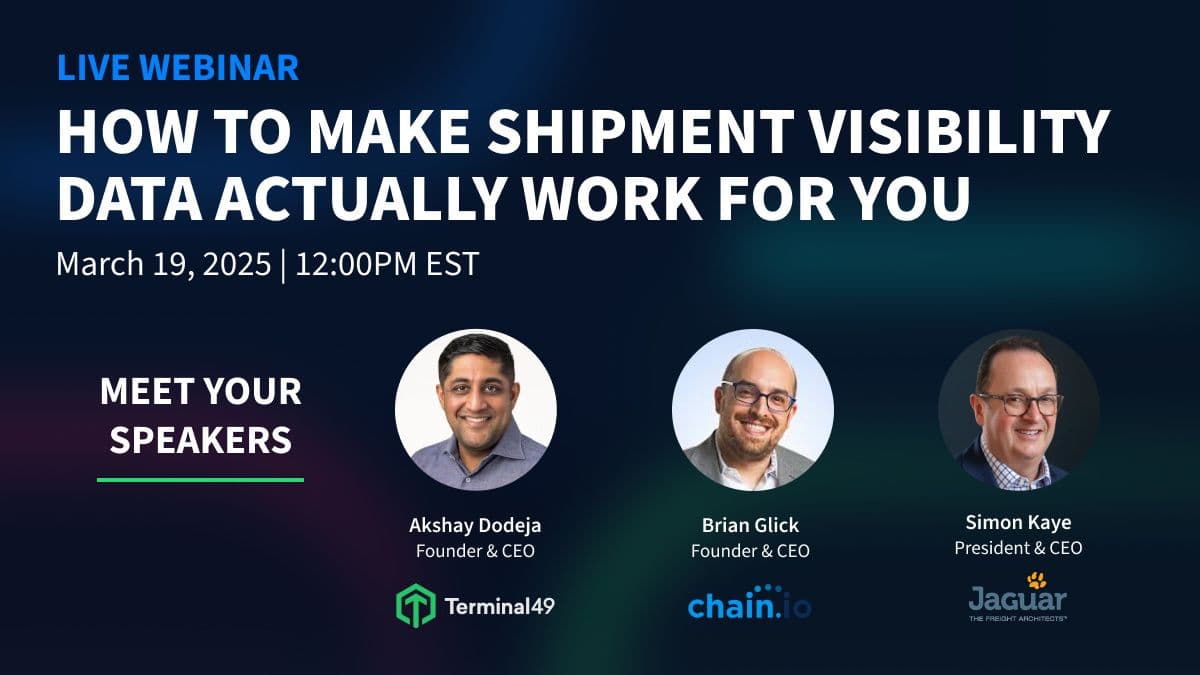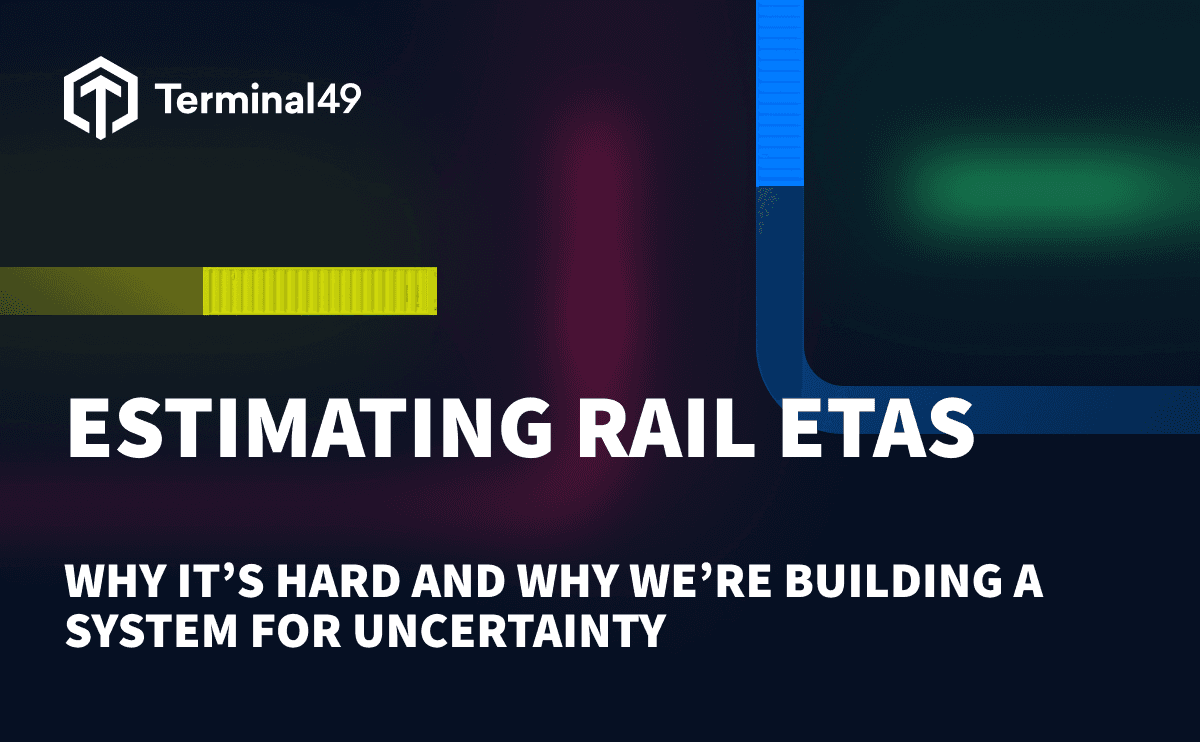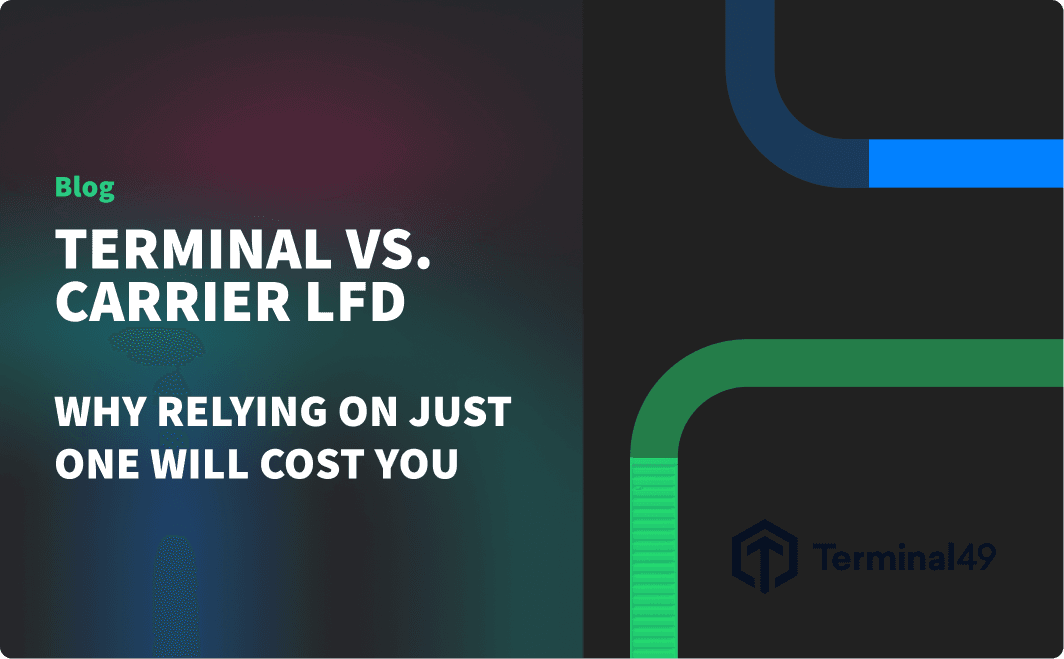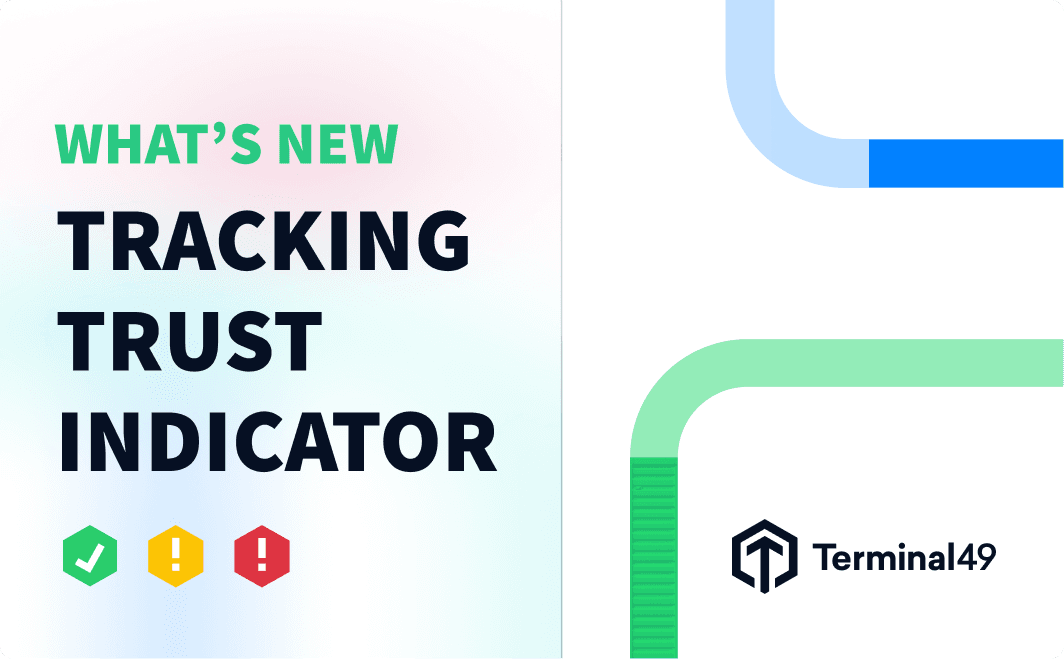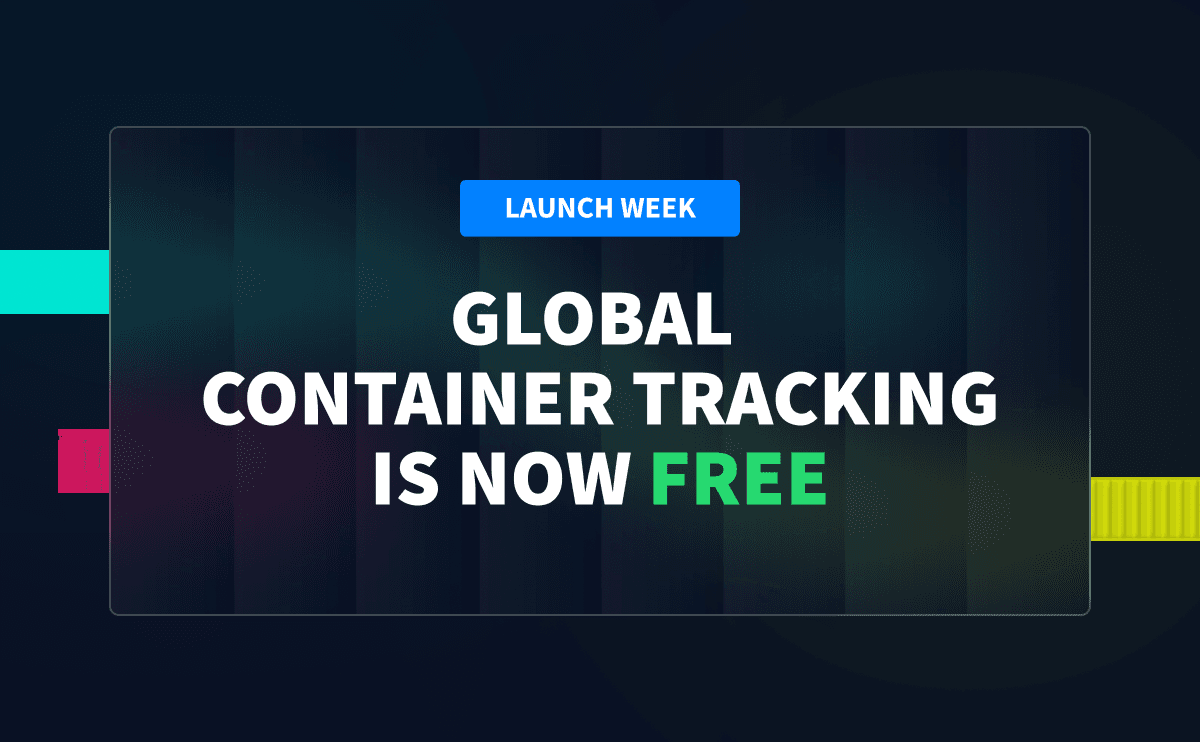APIs should make ocean freight more efficient. They should provide clean, structured, real-time data so that freight forwarders and shippers can automate workflows, make smarter decisions, and reduce operational friction. But today, the reality is more complicated—carrier APIs are inconsistent, incomplete, and still a work in progress.
At Terminal 49, we’re not waiting for carriers to fix this—we’re solving it ourselves by combining multiple data sources, filling in the gaps, and delivering real visibility. We take fragmented carrier, terminal, and AIS data and turn it into a complete, reliable picture of every shipment. But for the industry as a whole to evolve, carriers need to improve API quality, adopt standardization, and rethink their approach to data transparency.
Last week at TPM Tech, I joined Anand Medepalli (Chief Product Officer, Shippeo) and Jamie Andrade (SVP, Product Management, SEKO Logistics) to discuss the state of ocean carrier APIs. We all agreed: progress has been made, but there’s still work to do. As Anand put it:
“APIs are great in theory, but today they still have massive data gaps. If we subscribe to a carrier’s API, we STILL need to rely on old-school EDI to fill in the missing pieces.”
Carriers are investing in technology, but implementation challenges, legacy systems, and competing priorities are slowing the transition. We need to move faster.
Here are the takeaways from the panel.
1. APIs Are Just a Pipe—What Matters Is What’s in the Pipe
The biggest myth about APIs? That just having one means you’re modern and tech-driven. But as I said on stage:
"APIs are just an interface. Having access to water is great, but if the water is dirty, what’s the point?"
Every major ocean carrier now offers an API, but many lack reliability and completeness. Some don’t provide vessel arrival timestamps. Others leave out discharge events. Many ETAs are inaccurate. The data gaps force forwarders and shippers to piece together a complete picture manually.
Jamie summed up the forwarder perspective perfectly:
“I don’t care how my visibility provider gets the data—CSV, EDI, API, whatever. Just give me a clean, reliable API so I can use it.”
That’s where companies like Terminal 49 and Shippeo step in. We don’t just pass along raw data—we clean it, validate it, and cross-check it against multiple sources. That’s what makes it actionable.
2. Why Should Carriers Invest in APIs? Simple: Control.
Building a high-quality API takes time, money, and technical resources—and carriers have a lot on their plates. But bad data creates inefficiencies for everyone, including the carriers themselves.
“If carriers implement a real API strategy, they actually GAIN control. Instead of companies scraping their websites, they know exactly who is pulling data and when.” – Anand Medepalli
Right now, forwarders and shippers will get tracking data one way or another. If a carrier doesn’t provide structured data, companies scrape their websites instead. That increases server load, response times, and unnecessary friction.
By providing reliable API access, carriers gain more control over how data is accessed and used. They can manage API traffic, improve security, and create value-added services that help both their customers and their bottom line.
3. Charge for APIs? Sure. But Make Them Worth Paying For.
At TPM, we debated whether carriers should monetize API access. My take?
"If a carrier wants to charge for API access, fine. But make it worth the money. Give me complete, high-quality data that helps my customers make better decisions."
Today, forwarders and shippers often pay twice for tracking data:
- They pay the carrier for embedded tracking via an existing TMS or visibility tool.
- They ALSO pay an independent provider (like us) to get better, more reliable data.
That’s a broken system. If carriers want to charge for APIs, they need to offer real-time event updates, accurate ETAs, and full coverage across all shipments. A half-built API with missing milestones isn’t worth paying for.
4. Standardization: Stop Talking, Start Doing.
Everyone agrees that DCSA standards are needed, but progress has been slow. As Anand pointed out:
“We still don’t have a single API standard across all carriers. One API gives you vessel-level data, another gives you container-level data. Why? Just standardize it.”
Without common event definitions, data structures, and API frameworks, every new carrier integration becomes a custom project. That slows adoption and increases costs for everyone.
For APIs to deliver on their promise, carriers need to align on a standard and stick to it.
5. The Real Incentive Problem: Data Transparency vs. Revenue Streams
Let’s be honest—some carriers benefit from data opacity.
"If we do our job well, we help customers avoid fees—like demurrage and detention. That means carriers lose out on revenue. Some teams within the carrier WANT to keep data murky."
This is the tough reality: Better data means fewer surprise charges. If shippers can anticipate delays earlier, they can reposition containers, clear customs faster, and avoid unnecessary fees. That’s great for shippers, but it challenges some existing carrier revenue models.
That said, long-term customer loyalty is worth more than short-term fees. Carriers that invest in visibility, automation, and standardization will be the ones that win in the future.
What Happens Next?
Here’s the bottom line:
- Carriers are investing in APIs—but progress needs to accelerate.
- Data quality is more important than the API itself. Having an API doesn’t mean much if the data is incomplete.
- Standardization is overdue. Carriers must align on a single API framework.
- Charging for API access is fine—but only if the data is worth it.
- Ultimately, better data benefits everyone. Faster automation, fewer delays, and fewer unnecessary fees.
At Terminal 49, we’re not waiting for carriers to fix this—we’re solving it ourselves by combining data sources, cleaning the mess, and delivering real visibility. But for the industry as a whole to evolve, carriers need to step up and make high-quality, standardized, and transparent data a priority.
The demand for visibility isn’t going away. The only question is who will meet the challenge first.

